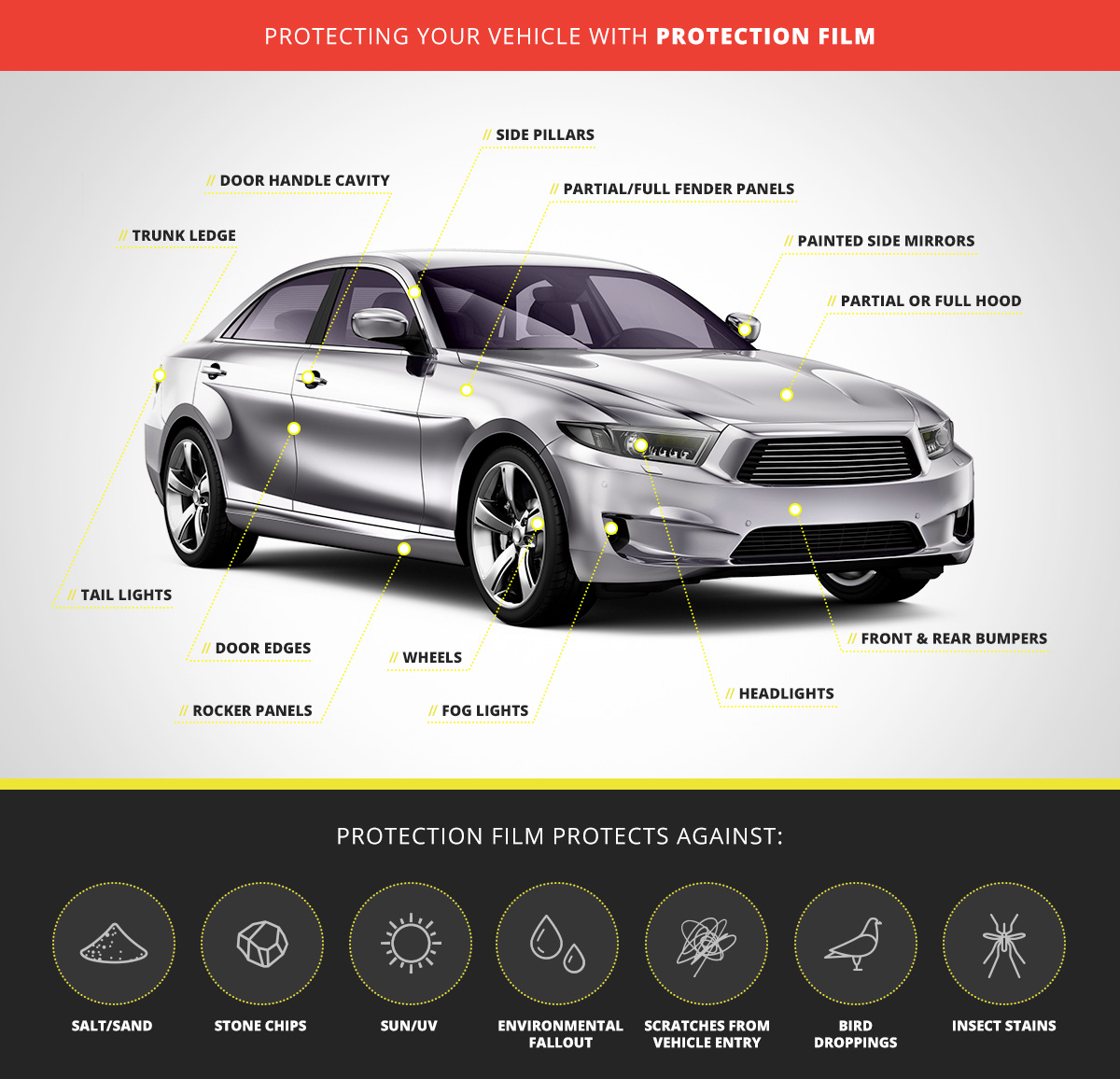From the minute your car leaves the lot, it's dealing with threats from all directions. Bugs, rocks, birds and even the sun will eventually take their toll on your pristine paint job. Thankfully, there are ways to tackle these problems and keep your paint looking bright and damage-free for years after you drive it home. Best of all? They won't cost you a fortune.

Protecting Your Ride From the Unexpected
Paint protection is a must for anyone who truly cares about the appearance of their vehicle. Every car owner knows that you have three options if you want to keep your vehicle looking as good as the day you bought it.
Types of Damage
The beauty of these paint protection films (PPF) is that they protect against a wide variety of common types of damage. Whether you're driving through trails in the forests or a well-kept city road, PPF can keep damaging agents away from your paint job. Some of the materials it protects your vehicle from include the following.
- Salt and sand: Though salt is perfect for keeping the roads clear and free of ice, it can be particularly damaging to the paint along the bottom of your car. Salt is a corrosive material that can eat through the paint and into the metal, causing it to flake off and possibly form rust. If left long enough, it could create a hole in the metal. Sand can similarly cause damage, and if you drive in places prone to sandstorms or near beaches, it could easily wreak havoc on your entire vehicle.
- Stone chips: Driving on anything besides the best-laid roads can send rocks flying in all directions. Gravel roads and trails will launch stones into the sides of your car, and the person in front of you could easily kick up rocks that hit your bumper and hood. They can dent the metal and chip away at the paint, leaving a speckled appearance or worse.
- Sun/ultraviolet (UV) damage: Leaving your car to bake in the sun opens it up to fading and cracking from the heat and UV rays. It could also yellow over time, which most PPF protects from. If you live in a sunny area, like the American Southwest, your car is particularly vulnerable to the effects of UV radiation. You can get a leg up on these effects by parking and storing your car in the shade, but PPF provides excellent UV protection.
- Environmental fallout: In the automotive world, environmental fallout typically refers to substances like acid rain, brake, and rail dust and pollen. Acid rain can include both wet and dry acidic pollutants. Some of its causes include coal-burning power plants, factories, and erupting volcanoes. When acid rain falls on cars, it corrodes paint and eats away at the flat surfaces. Rail dust consists of small pieces of steel that stick to the paint and can come from your car brakes or proximity to railroads. Pollen, while seemingly harmless, is quite acidic, and each tiny grain can erode the paint on your car, similar to salt and sand.
- Scratches from vehicle entry: Let's be honest, we're not always perfectly coordinated when getting in and out of our cars. Many people brush up against the side of the car hundreds of times, possibly carrying items that end up scratching the area around the door handles. Of course, the less careful you are, the more you may see these scratches. If you insert your key into the door and miss the keyhole, like you might in the dark, that is also a surefire way to add some marks to your door.
- Bird droppings: Bird droppings are more damaging than they look, and they can affect your car's paint in a few ways. The acid in bird poop can eat through the clear coat on your car and corrode the paint down to the metal, leaving obnoxious marks on the surface. But what seems to be a more aggressive culprit is the heat of a sunny day. In high temperatures, the metal body of your car expands, and the clear coat moves with it. When temperatures cool down, the metal and clear coat contract again, forming around the stationary bird droppings, which is what causes the etched effect or dull color as the poop becomes one with the paint.
- Insect stains: Bug remains work similarly. Decaying insects also contain chemicals that can damage the coat of paint on a car. Of course, they can cover your vehicle in droves at highway speeds, making it easy for them to coat your car and remove the protective layer on your paint. Once that happens, you'll see marks and discolorations where the bugs once were.


